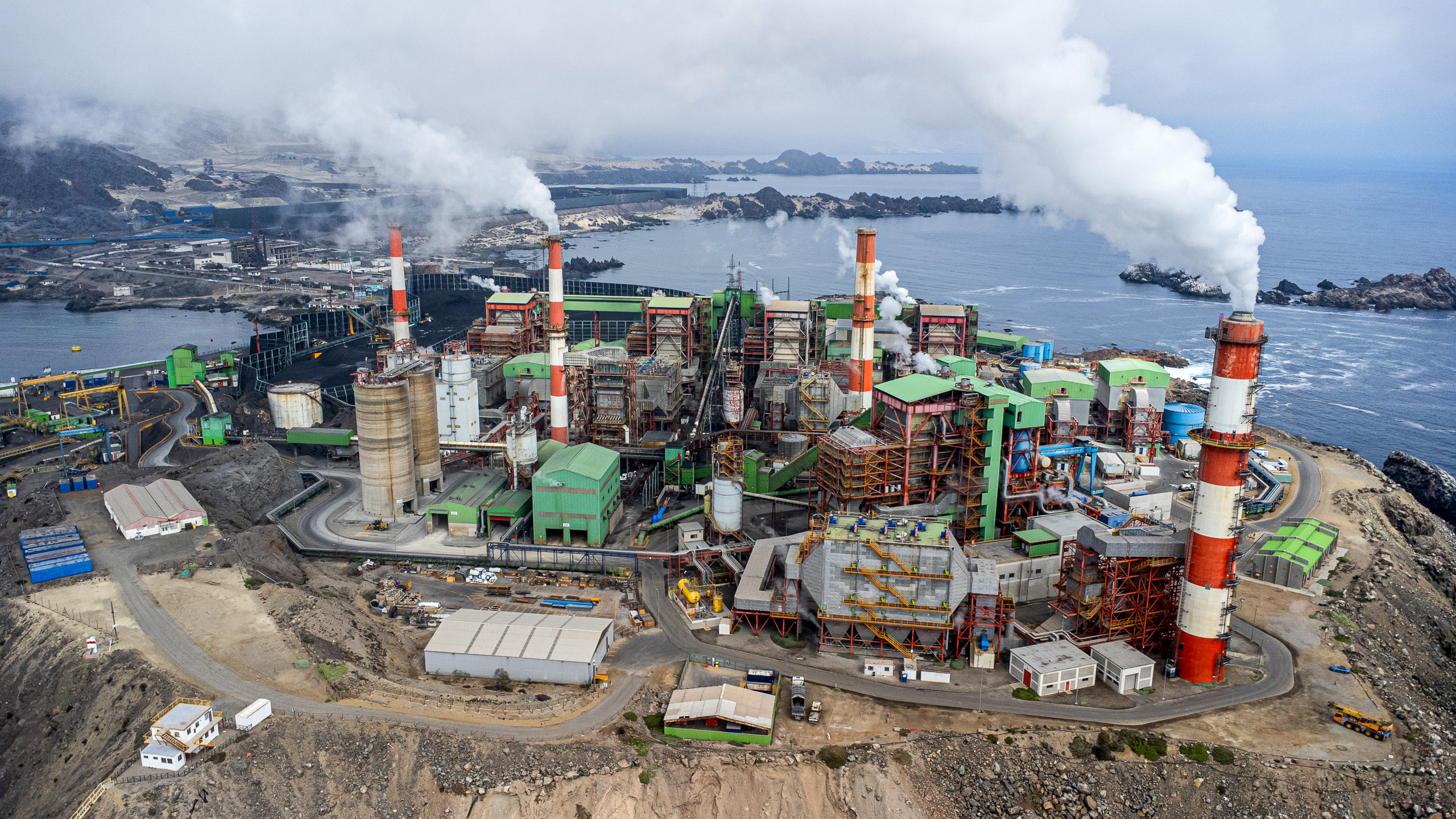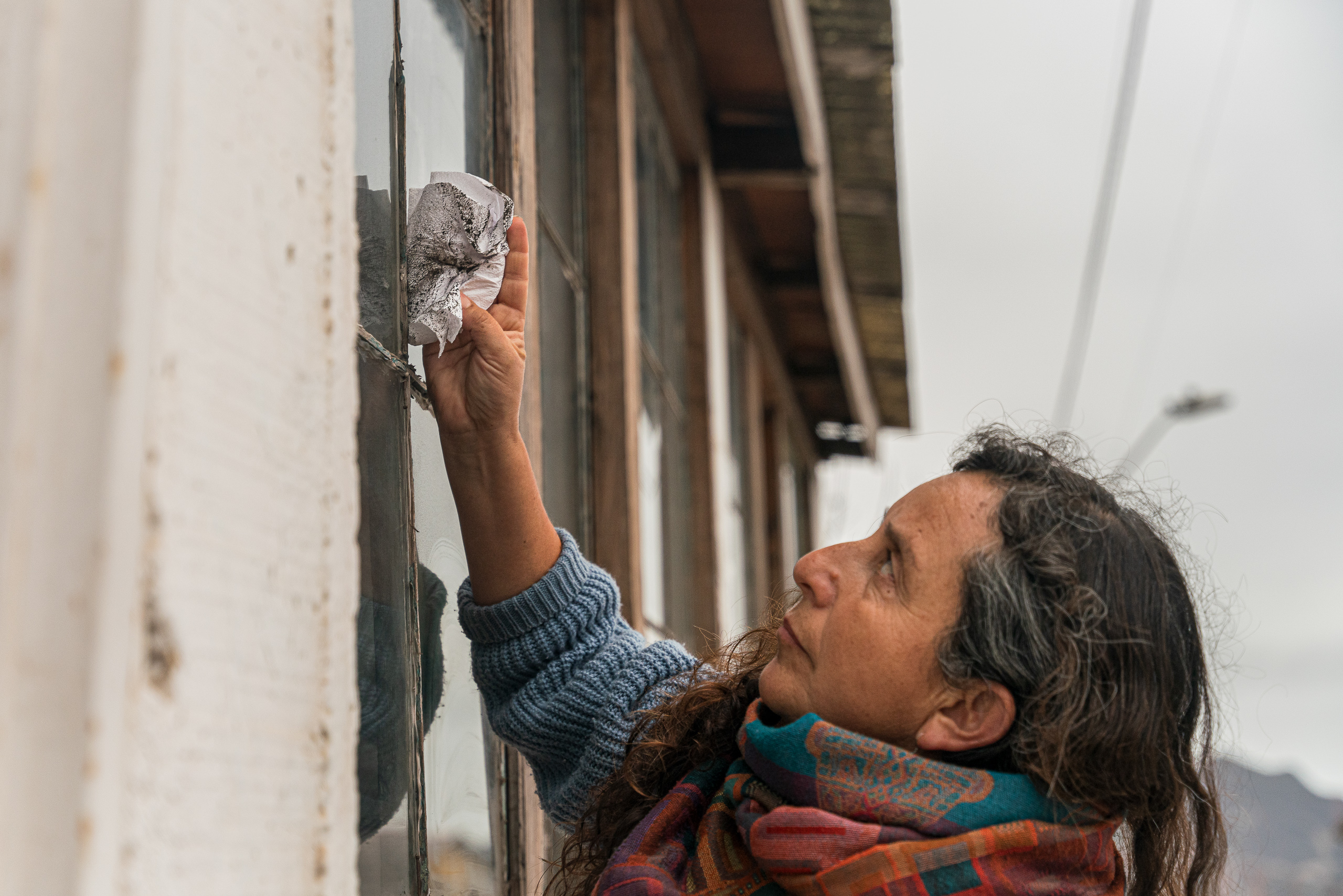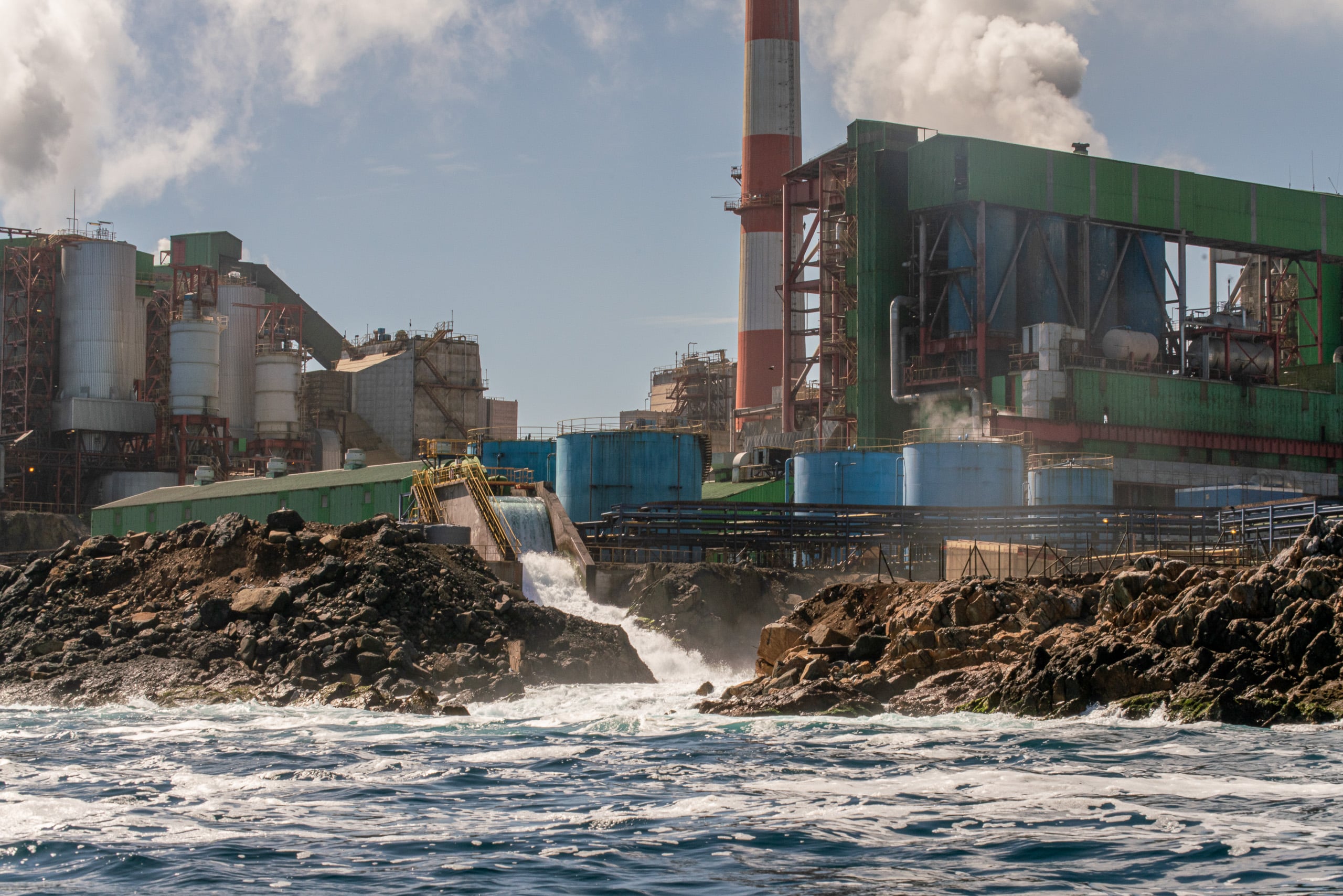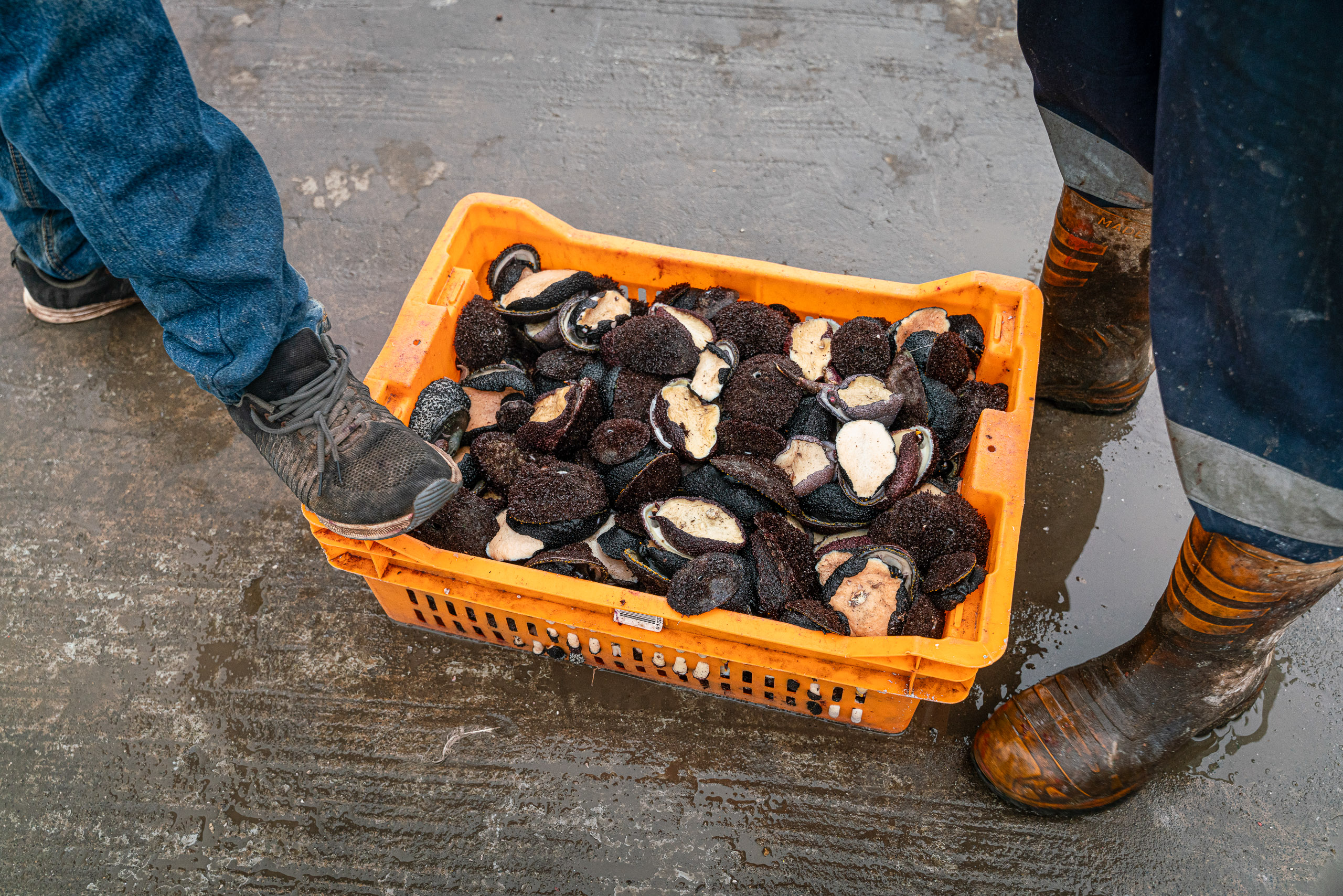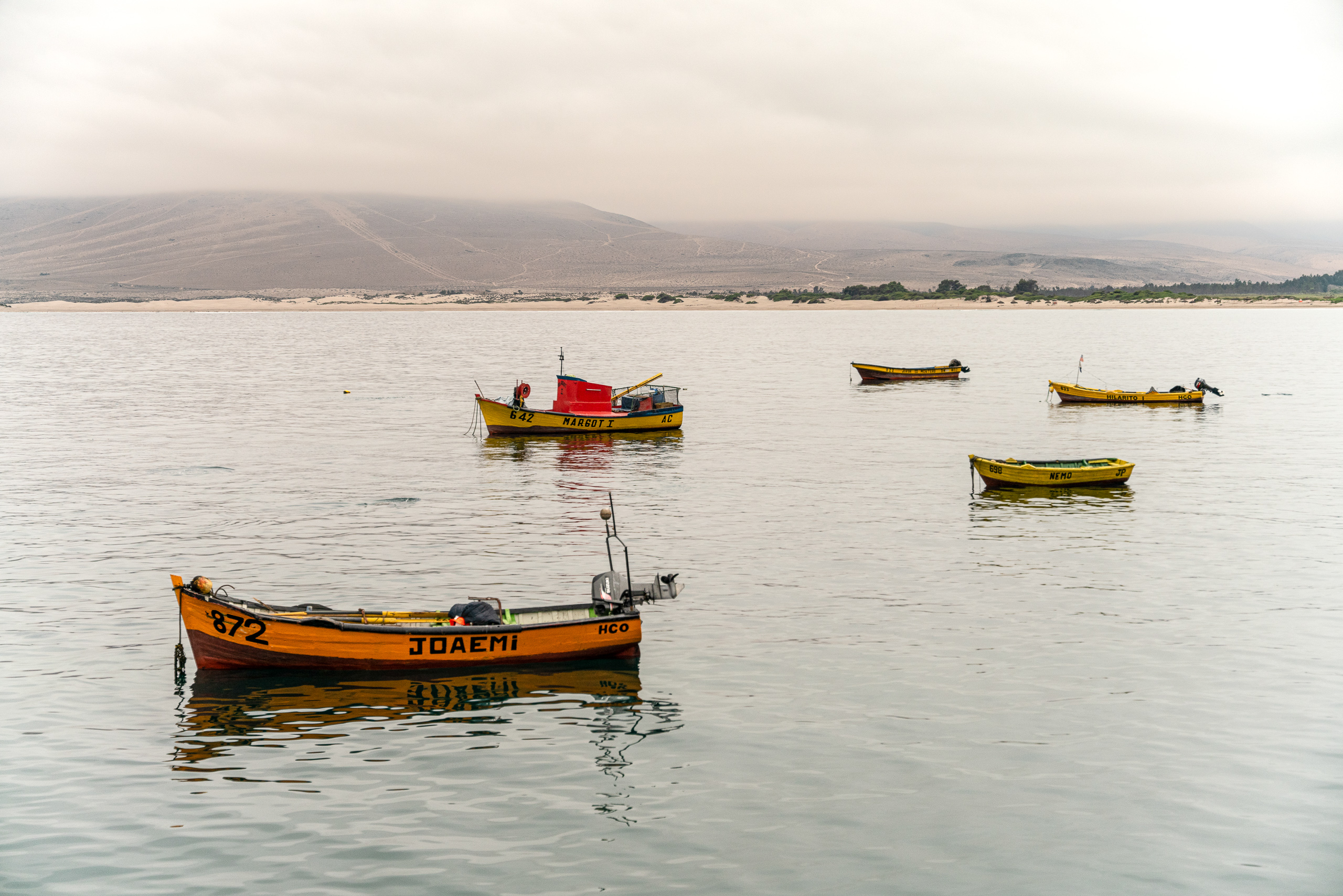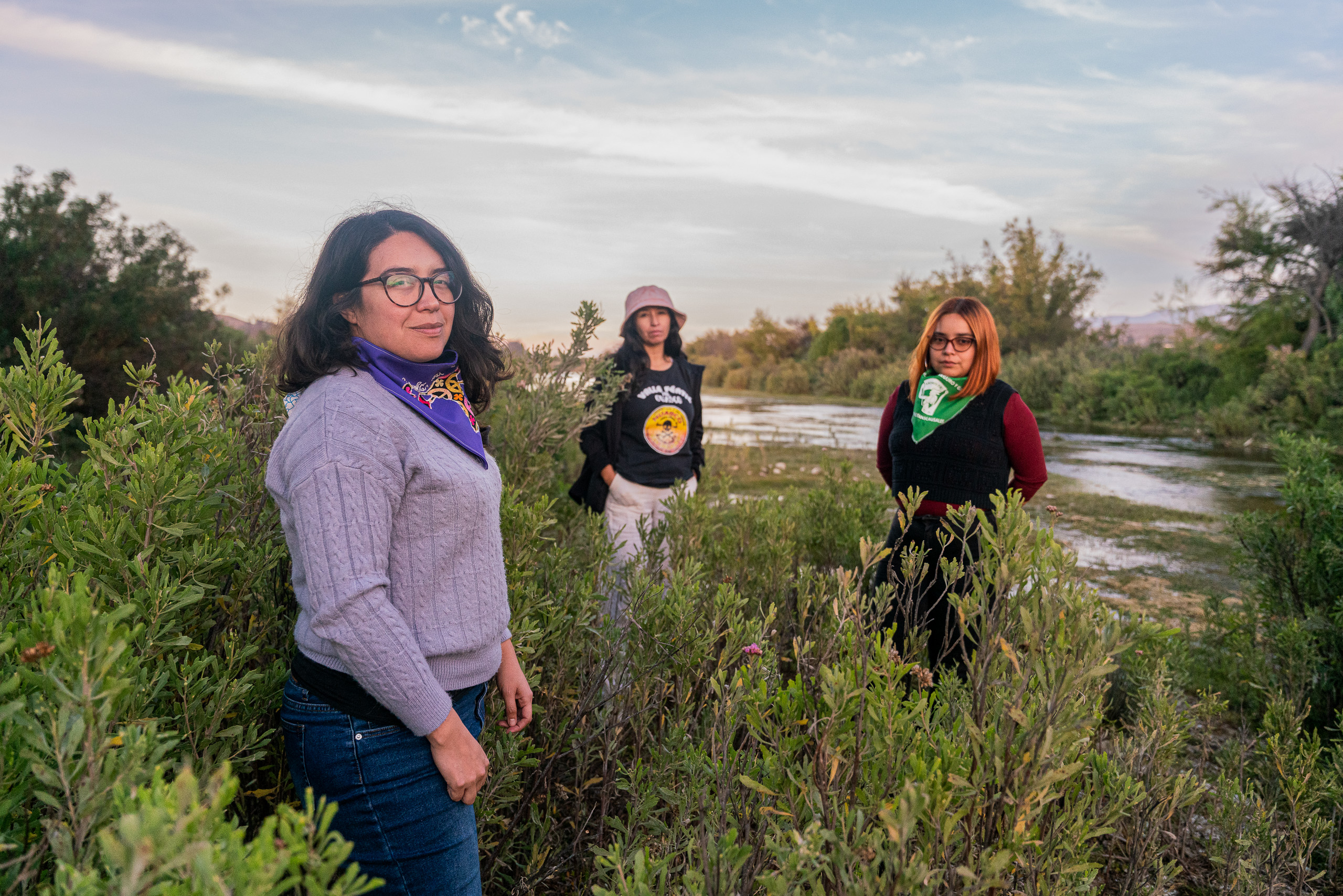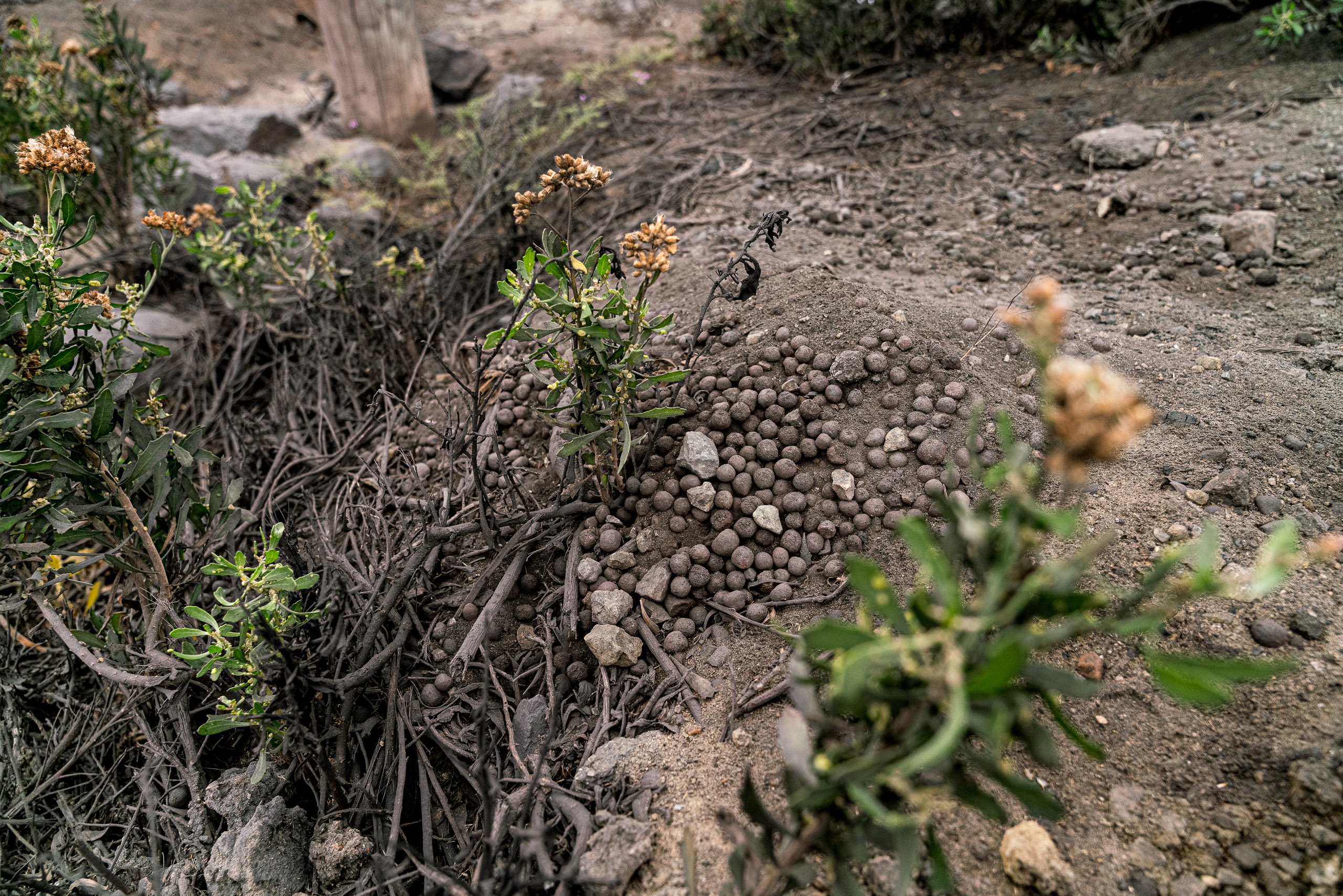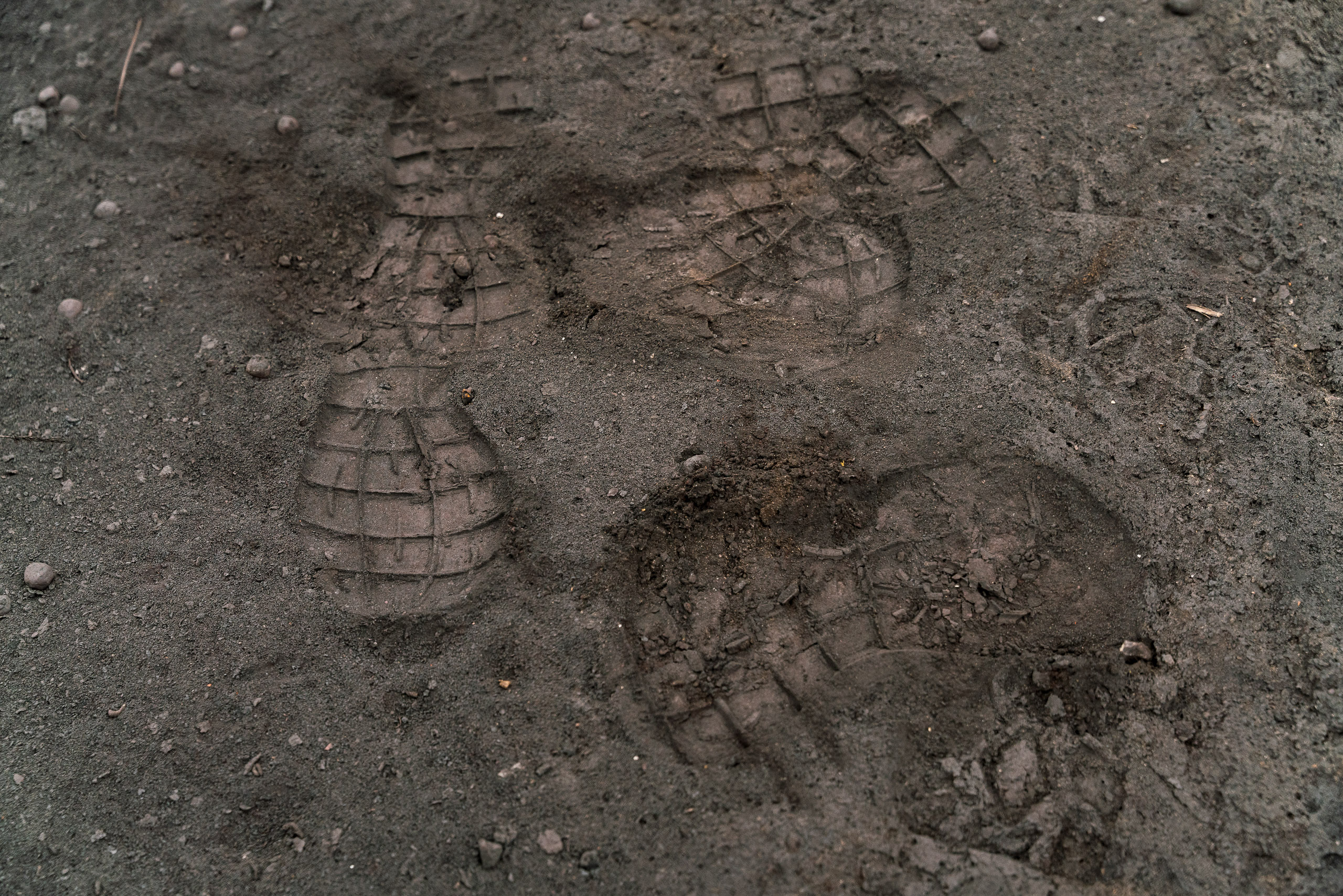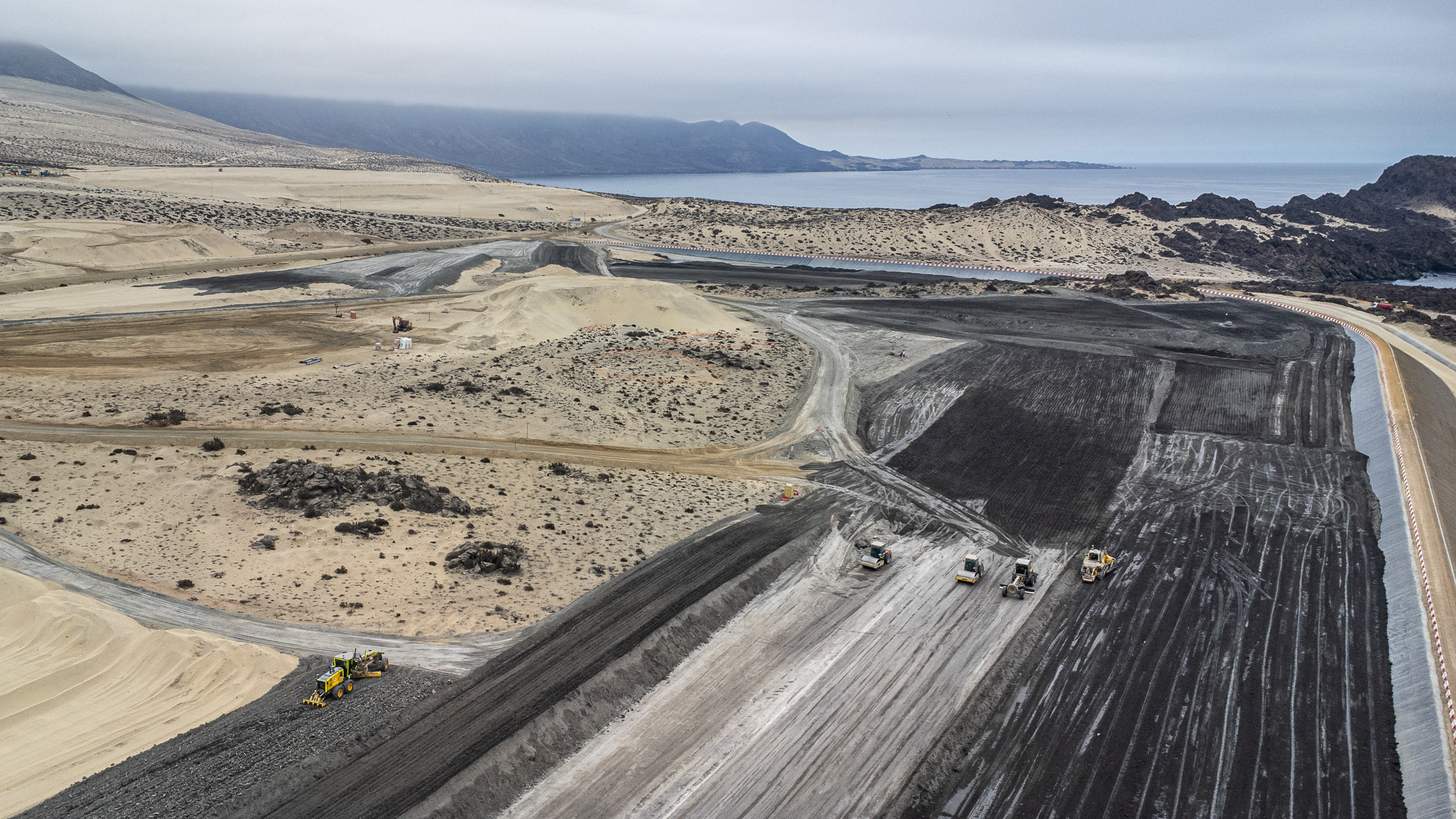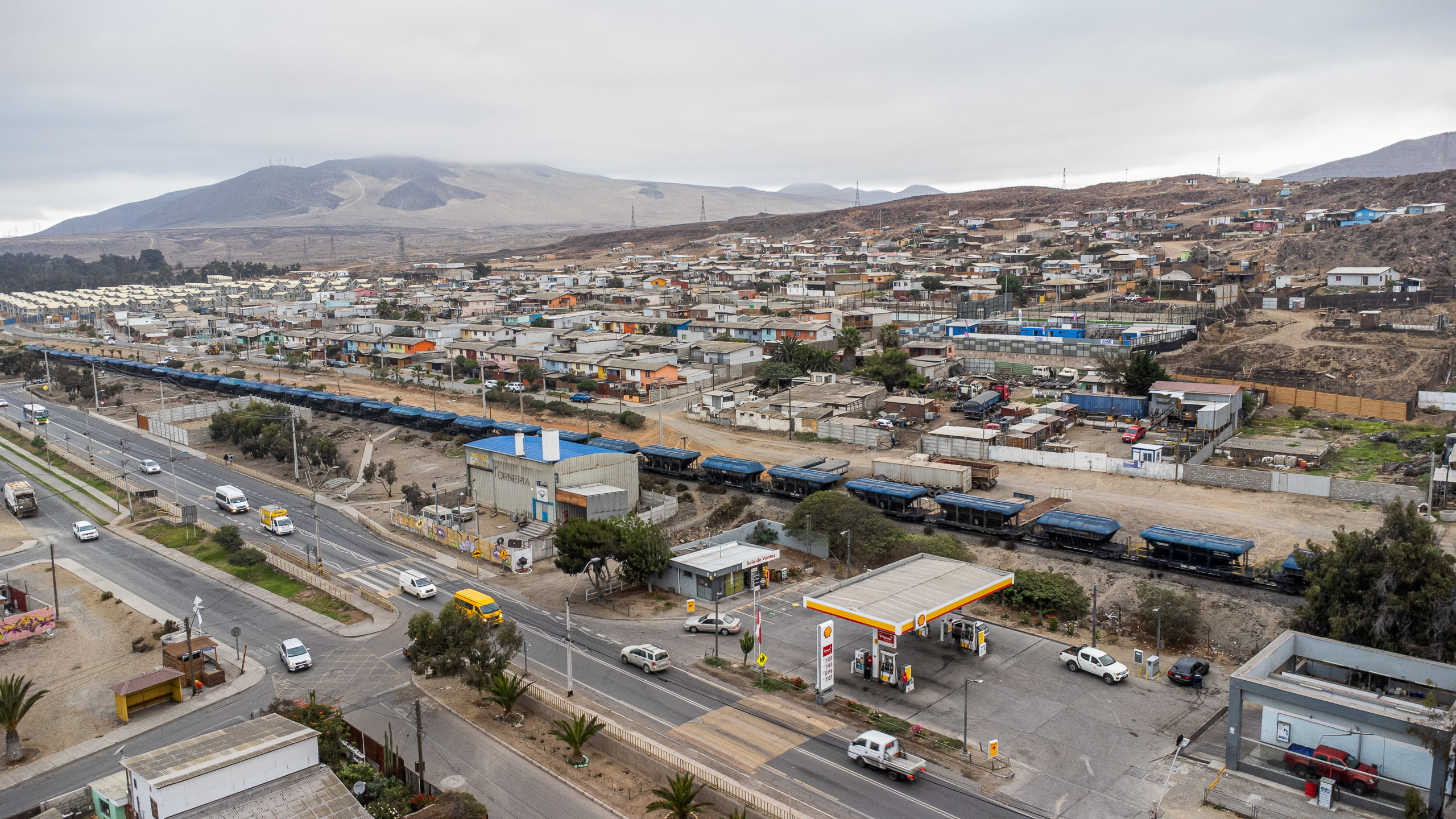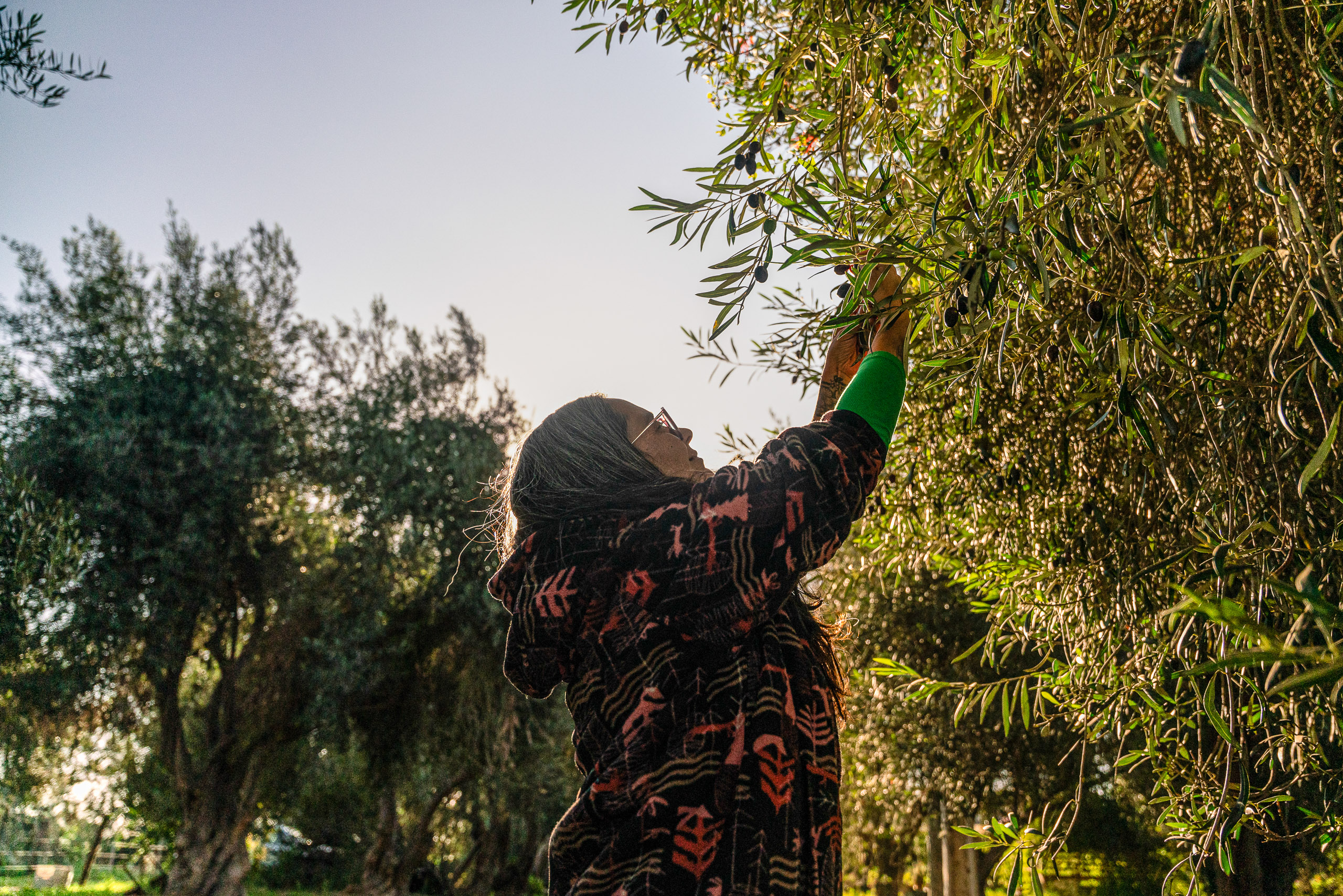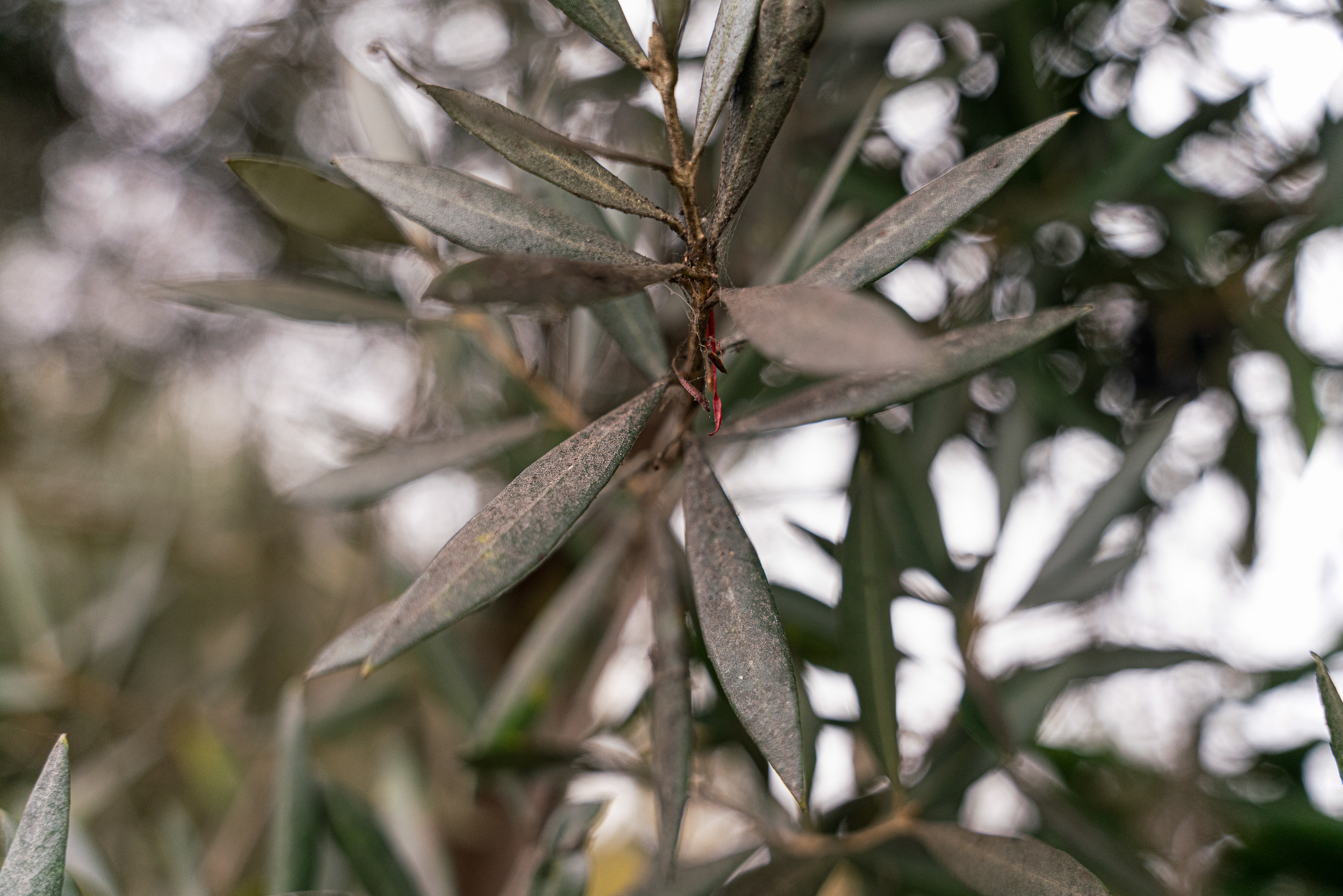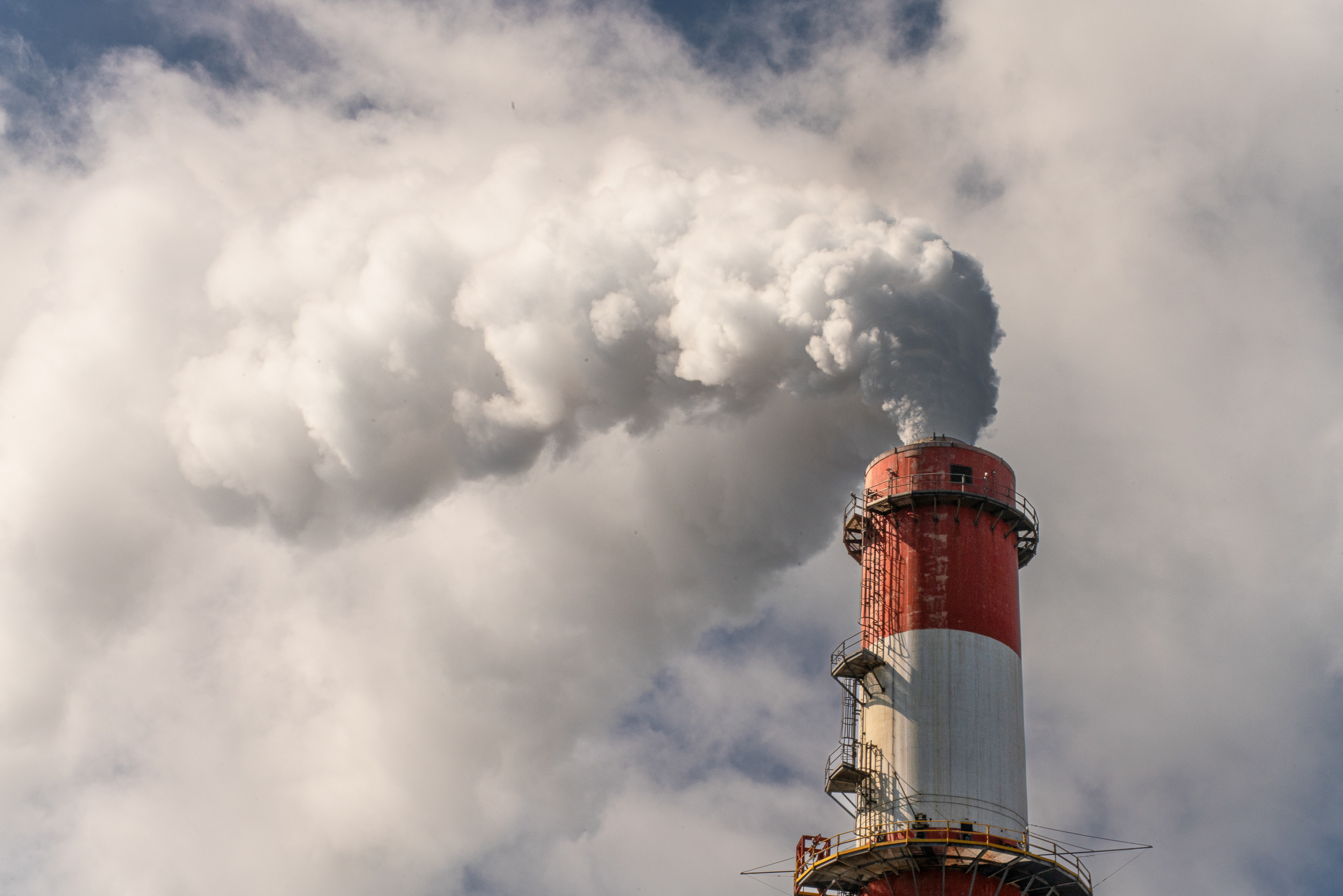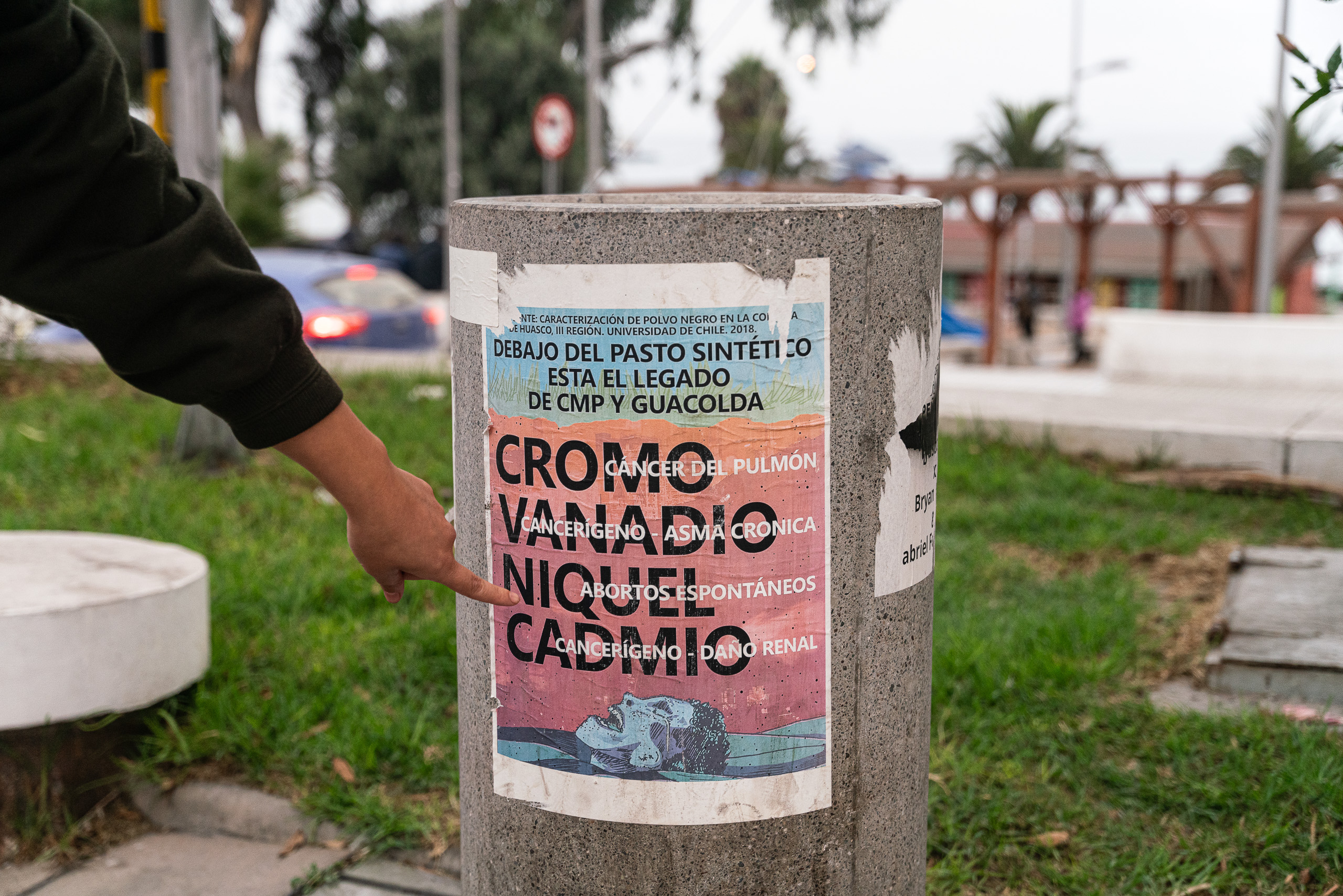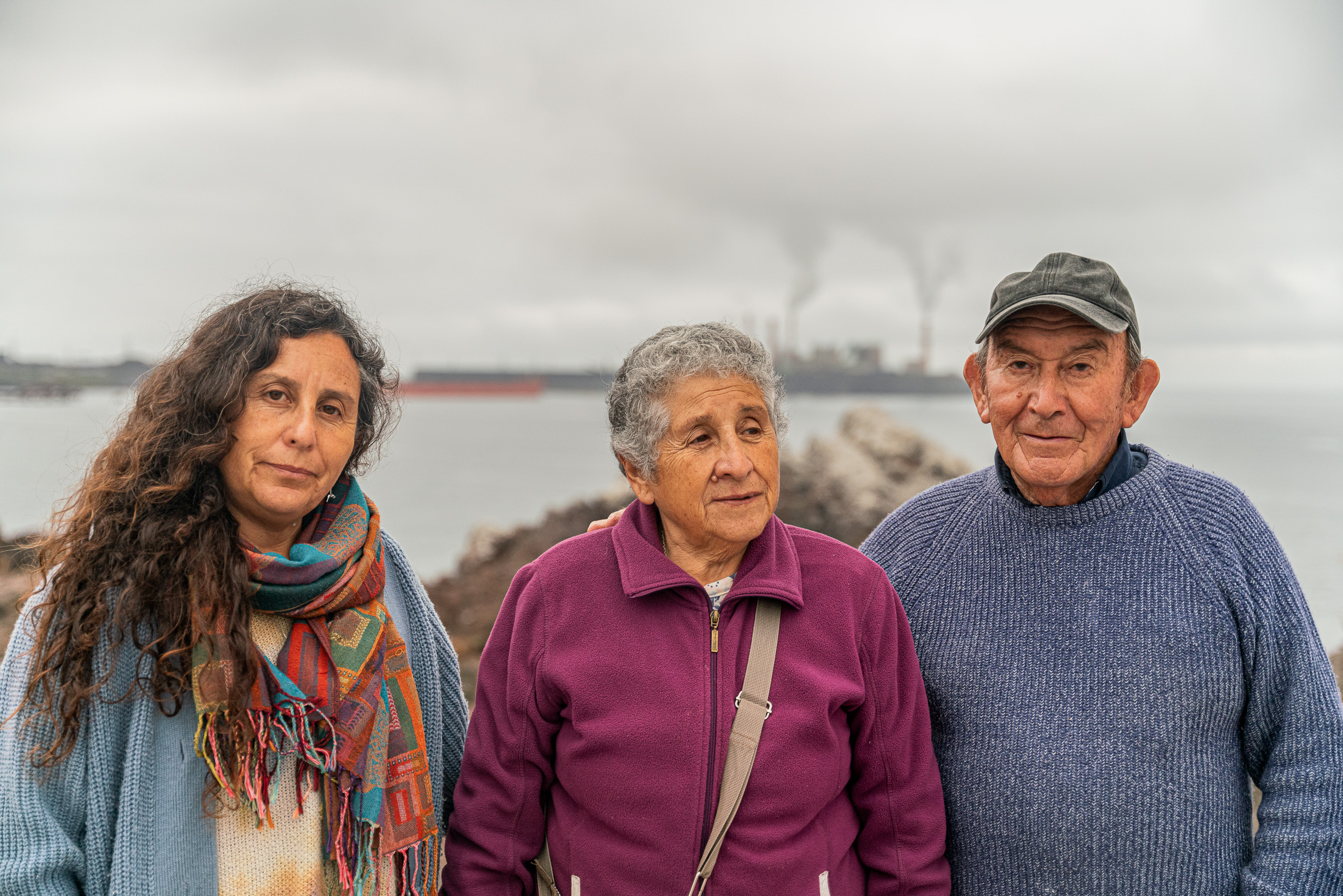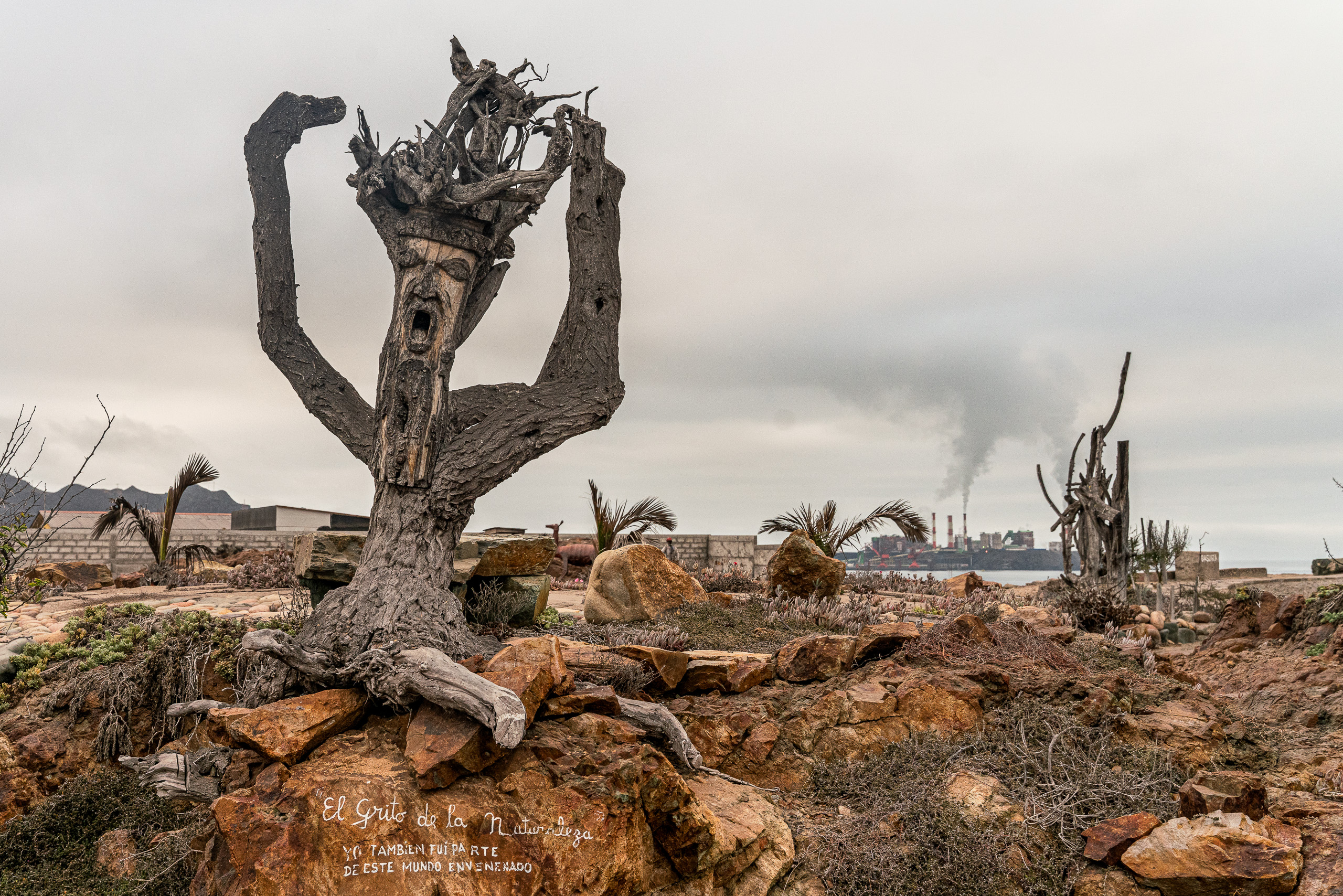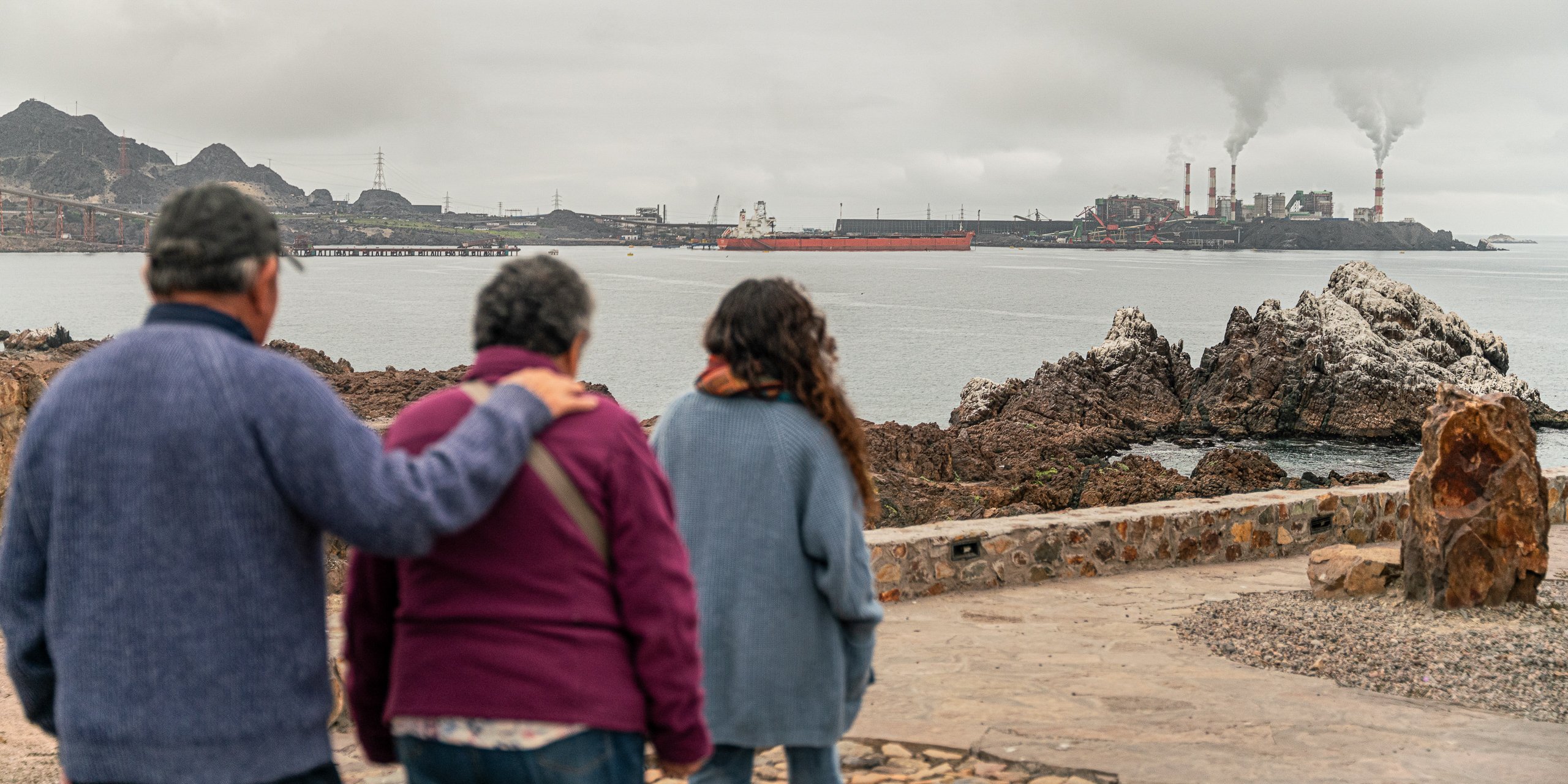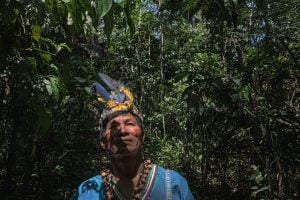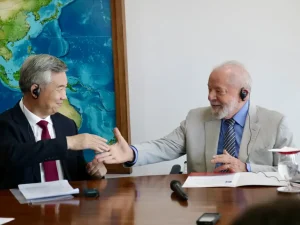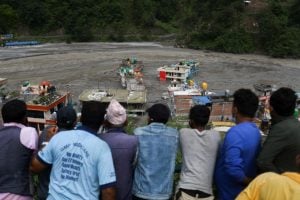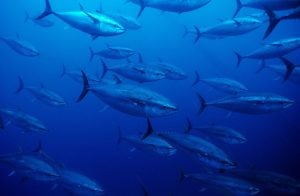In 2019, Chile pledged to close all of its coal-fired power plants by 2040, a deadline that its government has in recent years sought to bring forward to before 2030. So far, eight of 28 plants have closed, while another 12 are set to shutter before the end of 2025. But for the remaining eight facilities, no closure date has yet been announced – including for those at Guacolda, the country’s largest coal-fired power complex.
Guacolda, which hosts five coal-fired power plants with a combined capacity of 764 megawatts, is located in Huasco, a port city in the northern province of the same name, part of the arid Atacama region. Huasco is currently home to over 11,000 people who primarily make their living in fishing and agriculture.
The large industrial zone in which Guacolda sits also features a coal-fired iron ore pellet plant, operated by mining firm Compañía Minera del Pacífico (CMP). For decades, this facility dumped its tailings – the residues from the grinding and processing of ores to extract valuable iron concentrates – into the nearby sea. This practice was only brought to an end last year, with the waste now being disposed of on a large area of land just south of the plant.
It is because of the high levels of pollution from these industries that Huasco has come to be considered one of Chile’s “sacrifice zones”, a term used for areas of concentrated industrial activity, where environmental harms have often brought poor health and economic impacts for local residents.
The city of Huasco is home to a massive coal-fired power complex, pictured here, and an iron pellet plant. It has come to be considered a “sacrifice zone” due to pollution from these industries (Image:
Nicole Kramm / Dialogue Earth)
Huasco resident Pilar Triviño says she has to clean dust from her windows every day. A University of Chile
study of the area reported this “black dust” to be particulate matter air pollution linked to the burning of coal and the processing of iron ore by the nearby pellet plant. It was found to contain high levels of elements such as iron, manganese and vanadium. Exposure to particulate pollution can be harmful to human health, and has been widely linked to respiratory illnesses, cancer and pre-term births (Image:
Nicole Kramm / Dialogue Earth)
Pilar Triviño is an environmental activist, visual artist and member of Huasco Sin Relaves (Huasco Without Tailings), a local group campaigning against industrial waste dumping. She says respiratory illnesses are common in the city and communities in the nearby river valley. “Particulate matter is everywhere, being breathed in day by day by all the inhabitants,” she adds. A 2022 study found that air pollutants in Huasco, though compliant with Chilean domestic standards, were above those recommended by the World Health Organization.
A local fisher, who requested anonymity for fear of reprisals, told Dialogue Earth that because of the many years of waste dumping in Huasco’s coastal waters, he has to go further out to sea to find fish. He says fishers now receive economic support from CMP and Guacolda’s operator – payments he describes as “reparation” – but argues it is not enough. “We are leaving future generations with nothing,” he adds.
The impacts are also said to have been felt in local agriculture. Alex Gajardo and Carmen Luisa Castillo are a local couple who grow olives along the Huasco River, which waters a fertile strip of valley that runs between desert hills to meet the sea just north of the city. They say air pollution from the Huasco industries has caused trees to fail to bear fruit. “We used to get 10,000 kg per hectare,” says Castillo. “Today, if we’re lucky, we’re getting 3,000 kg.”
Water used for cooling by the Guacolda power complex is released back into the sea. The practice has been observed to raise the temperature of waters and impact marine animals, including
rare birds and
fish. One local fisher says Huasco’s waters once supported an abundance of marine life, including sardines and mackerels. He blames both the power complex and the dumping of waste by the pellet plant for changing this (Image:
Nicole Kramm / Dialogue Earth)
The dumping of tailings into the sea over four decades increased turbidity, which has been found to impede the growth of phytoplankton, the base of the marine food web. Government analysis has described a
toxic legacy, with both seawater and sediments continuing to contain higher levels of elements such as arsenic and copper. Fishers say they must now travel much further from shore to bring in catches, especially of shellfish (Image:
Nicole Kramm / Dialogue Earth)
Fisher families in Huasco say that they have recently started to receive “reparations” from the pellet plant and the Guacolda power station, with each reportedly giving 50 million Chilean pesos a year. They say this equates to about 856 pesos (USD 0.9) per day for each family. Though the companies have
announced assistance programmes to local fishers, they have not publicly confirmed these figures (Image:
Nicole Kramm / Dialogue Earth)
In 2017, Huasco was included, along with other sacrifice zones, in the Chilean environment ministry’s Programme for Environmental and Social Recovery (PRAS), created to intervene in areas with critical levels of contamination. It targeted partnerships with local companies and the local government, setting out new environmental regulations, improving air quality monitoring and carrying out consultations with citizens. However, community participants claim the programme has not provided substantive solutions.
Guacolda Energía, operator of the power station, told Dialogue Earth that it had participated in the programme and worked on “social, environmental and cross-cutting” measures.
It said it “maintains productive strengthening programmes with organisations of artisanal fishers and with olive growers of Huasco, with the objective of promoting their development.”
When asked about air quality in Huasco, Guacolda Energía told Dialogue Earth that it had taken a “series of measures” since 2014 to reduce emissions as part of an environment ministry pollution prevention plan. It stated that “in recent years these have dropped significantly… to the point that Huasco no longer qualifies as a latency zone for particulate matter.”
This place has been affected for more than 40 years. Even if they close the station tomorrow, the impact will not go away immediately
Pilar Triviño, Huasco resident, artist and environmental activistThe company is currently evaluating a plan to convert the complex for the production of “green ammonia”, a fertiliser and fuel produced using renewable energy. It says this would allow it to avoid closure and maintain the jobs of the more than 900 people who work there.
Despite these challenges, many of Huasco’s young people still dream of being able to continue living here. Local campaign groups have called for the closure of polluting industries, but understand the complexity of what this means. “More than an energy transition, we have to achieve a labour reconversion, looking for new economic activities,” says Catalina Gaete Vásquez from Resueltas del Valle (Resolutes of the Valley), a local ecofeminist collective set up in 2017.
Catalina Gaete Vásquez (left) with other members of Resueltas del Valle near the Huasco River at Freirina, upstream from the city. “Our valley can no longer withstand so much extractivism,” she says. “Nothing is being done to protect it. Not by the authorities, who ought to be doing it. It is just the communities trying to resist as much as we can. Because we don’t want to leave” (Image:
Nicole Kramm / Dialogue Earth)
Fabiola Perez, a regional councillor for Huasco, says the community set out its desire “a long time ago” for sustainable economic development based on activities such as agriculture and tourism. “When we talk about a change in the productive matrix, that is the change. The communities are not willing to lose this valley, which is unique,” she adds.
While they wait on the future redevelopment of the industrial zone, the inhabitants of Huasco are also witnessing the expansion of solar energy projects around the region, taking advantage of its proximity to the Atacama Desert, which receives some of the highest levels of solar radiation on Earth. However, some are critical of the projects being located near towns and on valuable agricultural land, claiming the energy produced will not go to residents but towards mining operations.
“While they are thinking about closing the thermoelectric station, they are invading our territory with photovoltaic panels and power lines. The underlying thinking has not changed,” says Triviño. “This place has been affected for more than 40 years. Even if they close the station tomorrow, the impact will not go away immediately.”
A view of Compañía Minera del Pacífico’s (CMP) iron pellet plant, with the Guacolda power complex in the background. Until last year the pellet plant was dumping its tailings into the sea, reportedly at an average rate of
4,700 cubic metres a day. Community members and
media reports claim the amount was at times double this figure (Image:
Nicole Kramm / Dialogue Earth)
Discarded iron pellets can be seen scattered near the plant and the industrial zone’s sea terminals. Produced from ore mined deep in the interior of the province, the pellets are exported for use in blast furnaces (Image:
Nicole Kramm / Dialogue Earth)
The industrial zone is also covered in layers of black dust. According to a University of Chile
study, this could come from the pellet plant’s stockpiles of iron ore and the handling of materials. This dust contributes to air pollution found all over Huasco (Image:
Nicole Kramm / Dialogue Earth)
Following years of citizen complaints and government sanctions, the pellet plant has now begun to dispose of its tailings on land rather than into the sea. The tailings are filtered, which removes water to make them more compact and stable, and will be gradually built up into five terraces that the company says will be covered with
sand and native plants. The site is located near Brava beach, which is popular among residents in summer (Image:
Nicole Kramm / Dialogue Earth)
Alejandro Varas, a spokesperson for the Huasco Sin Relaves (Huasco Without Tailings) campaign, touches dying cacti at the new tailings site. Since it was set up three years ago, the organisation has brought various legal challenges against the new tailings deposit project, which they claim will increase pollution and damage Indigenous archaeological sites (Image:
Nicole Kramm / Dialogue Earth)
The Ferronor railway transports iron ore from the CMP-owned Los Colorados mine, 45 km to the north-east of Huasco. To reach the pellet plant, the line follows the Huasco Valley for much of its length. The trains roll through every couple of hours, every day of the year, passing schools, residential neighbourhoods and farmland (Image:
Nicole Kramm / Dialogue Earth)
Farmer Carmen Luisa Castillo harvests olives from her trees in El Pino, a community in the Huasco Valley. She says young people tend to escape rural areas like this, leaving fewer and fewer people to farm the land. Her partner, Alex Gajardo, adds that the challenges faced by local agriculture receive little support and attention, and that education and training programmes are geared towards industrial activities (Image:
Nicole Kramm / Dialogue Earth)
Many of the couple’s olive trees are coated in black dust, which affects photosynthesis. Castillo says this is one of the reasons productivity has declined (Image:
Nicole Kramm / Dialogue Earth)
Gajardo passes a magnet over the dust found on their olive trees to show how much iron it contains (Image:
Nicole Kramm / Dialogue Earth)
Gajardo removes leaves and twigs from harvested olives before preparing them for market by curing them. He says acid rain, caused by the burning of coal, is also impacting productivity by affecting the trees’ blossoms, a claim backed up by a
2013 study evaluating the impact of pollution on the area’s olive sector (Image:
Nicole Kramm / Dialogue Earth)
The burning of coal releases sulphur dioxide and nitrogen oxides, which are key causes of acid rain. These gases, together with carbon monoxide, ozone, and particulate matter under 10 and 2.5 microns in size (known as PM10 and PM2.5) are
monitored by 11 air quality stations in Huasco and its valley (Image:
Nicole Kramm / Dialogue Earth)
A campaign poster in Huasco blames Guacolda and CMP for polluting the environment with toxic elements such as nickel and cadmium, causing various health issues, including lung cancer and chronic asthma. A 2019
study by the NGO Chile Sustentable found that residents of Huasco have a 71% higher chance of dying of cardiovascular diseases compared to the national average. They also were reported to have a 53% higher chance of falling ill due to respiratory causes (Image:
Nicole Kramm / Dialogue Earth)
“For many, living in a sacrifice zone is like living in a violent relationship,” says Pilar Triviño (left), alongside her parents, Pensilvania González and Luiz Alberto Triviño. Pilar lost her brother to cancer, and her sister has suffered from asthma since childhood (Image:
Nicole Kramm / Dialogue Earth)
A sculpture by Luis Alberto Triviño near the coast of Huasco, with the industrial zone visible in the distance. Under the carving, the inscription reads: “The Cry of Nature. I too used to be part of this poisoned world” (Image:
Nicole Kramm / Dialogue Earth)
